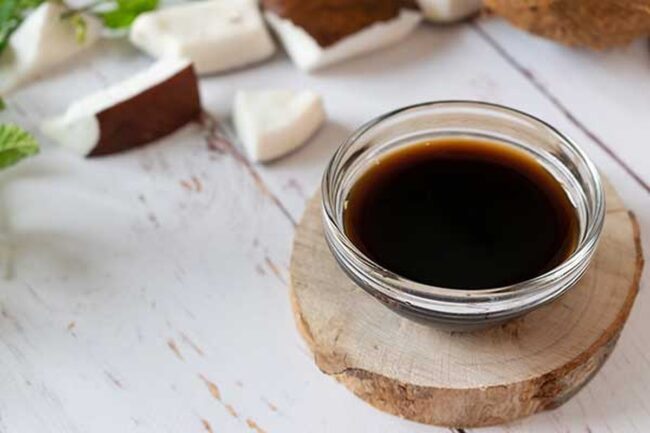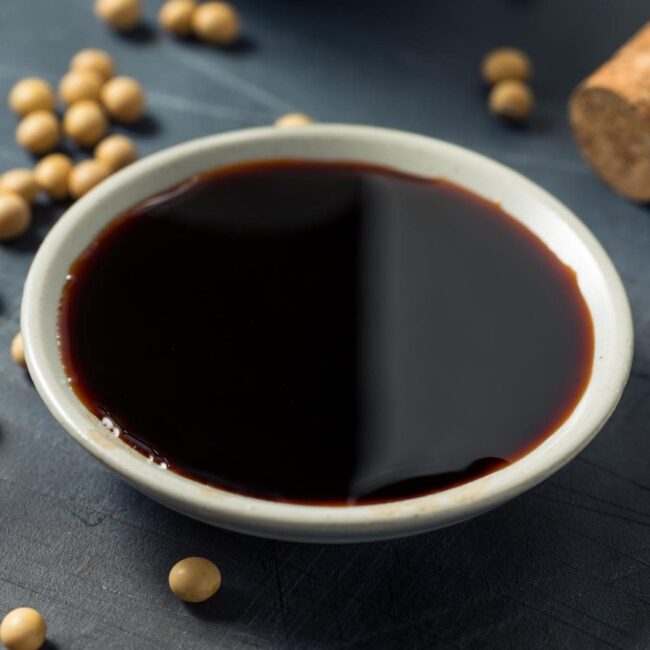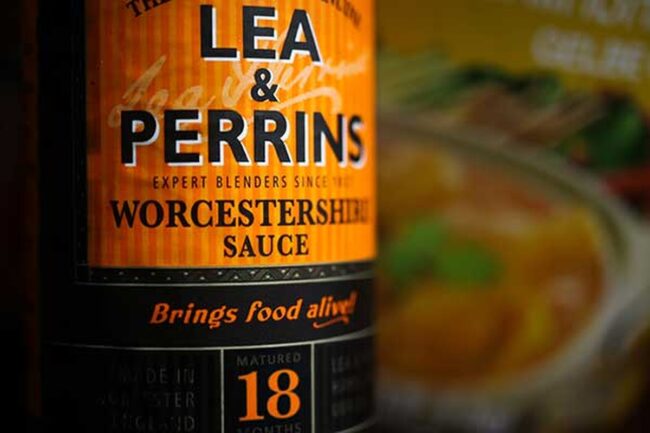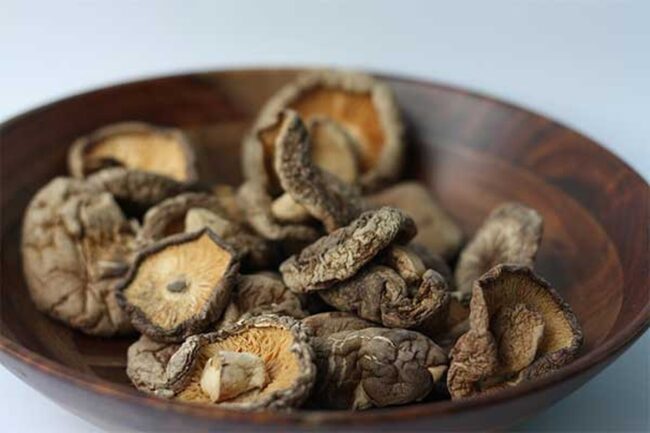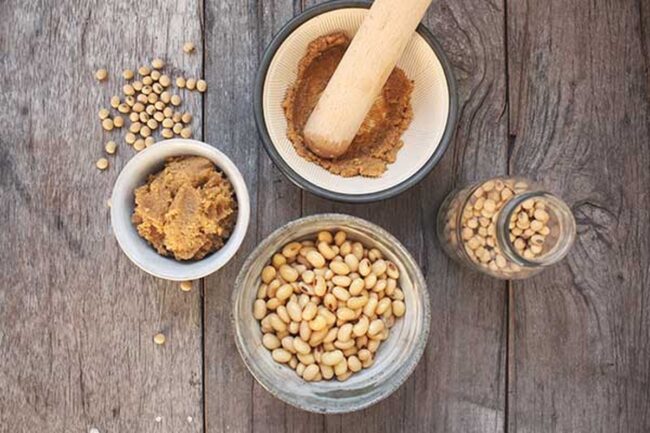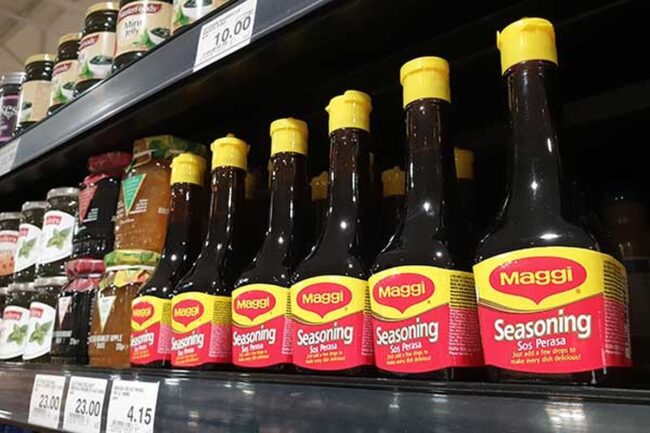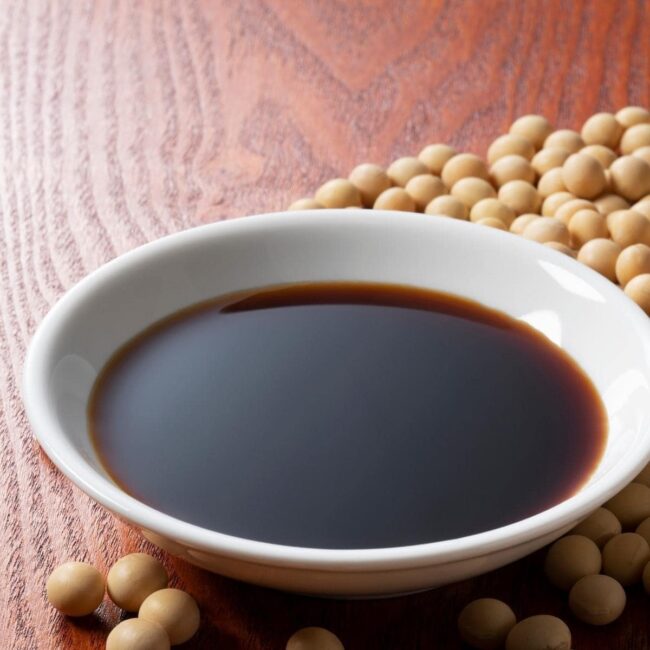10 Delicious Soy Sauce Replacements
Here are the top soy sauce substitutes that give umami-rich flavors and enhance your favorite dishes just as well.
These alternatives mix easily into both Asian and Western recipes, adding more taste and savoriness.
With flexible options available, your kitchen stays adaptable and your meals always taste great.
The History of Soy Sauce
Soy sauce has a rich history that traces back to 206 B.C.
in China, during the Western Han dynasty.
Initially created to stretch limited salt supplies, its origins are linked to an ancient substance called ‘chiang’ or ‘jiang’.
Archaeological discoveries at Mawangdui highlight its significance in early culinary practices.
As time passed, soy sauce spread beyond China’s borders, captivating taste buds across Korea, Japan, Indonesia, and Southeast Asia.
European interest grew in the 1600s thanks to trade with Japan; by the early 1900s it had made a mark on American cuisine through production efforts like those from Hnawaiian Yamajo Soy Company in Hawaii and later La Choy's introduction of chemically produced variants.
Substitutes of Soy Sauce
When soy sauce is unavailable, several substitutes can replicate its essential flavors. They allow you to adapt recipes and keep your meals satisfying. Here are 10 choices to replace soy sauce perfectly.
Coconut Aminos
Coconut aminos serves as a popular alternative to soy sauce.
The dark liquid offers a taste that closely resembles soy sauce but without the gluten and soy, making it safe for those with related allergies.
This substitute is less salty, containing only 90 milligrams of sodium per teaspoon compared to the 290 milligrams in regular soy sauce.
Made by aging and fermenting sap from coconut plants, it develops a savory flavor during this process.
Use coconut aminos in equal parts when replacing soy sauce, though adding extra salt might be necessary for some recipes.
Proper storage involves keeping unopened bottles in cool places and refrigerating them after opening; they last up to one year once opened or three years if sealed tightly.
Tamari
Tamari, a Japanese product, serves as a gluten-free alternative to soy sauce.
This sauce is thicker and often used for dipping.
Made from soybeans, it follows a similar production method as traditional soy sauce and comes from the liquid of drained miso paste.
For recipes calling for soy sauce, equal amounts of tamari can be substituted without altering flavor significantly.
Sodium content is slightly higher in tamari at 1,000 milligrams per tablespoon compared to regular soy sauce.
Storing it in a cool and dry place with the cap tightly sealed ensures its freshness without needing refrigeration.
Worcestershire Sauce
Worcestershire sauce has roots in the UK, with its earliest mention dating back to 1835.
Developed by two chemists, Lea and Perrins, this sauce brings a mix of tangy, savory, and sweet flavors.
Commonly found in stews and marinades, it also plays a key role in the famous Bloody Mary cocktail.
Traditional recipes feature malt vinegar blended with anchovies and various spices for an umami taste that rivals soy sauce but is gluten-free.
In the US version of this condiment, distilled white vinegar replaces malt vinegar but can be swapped one-for-one if needed.
Homemade Worcestershire sauce requires several ingredients including onions and tamarind paste; simmering for hours produces a rich flavor perfect for storage in sealed jars.
Dried Mushrooms
Rehydrated dried shiitake mushrooms serve as an excellent alternative to soy sauce.
These mushrooms are free from soy and gluten, plus they contain less sodium.
Soaking them in boiling water releases a flavorful liquid that adds a savory touch to your meals.
This soaking liquid can substitute for soy sauce in equal amounts, creating a similar depth of flavor without the extra ingredients.
While it may not taste exactly like traditional soy sauce, the umami essence enhances any dish beautifully.
Consider this option for healthier cooking choices without sacrificing taste.
Fish Sauce
In Thailand, fish sauce serves as a key seasoning, much like salt and pepper in Western cooking.
This ingredient is made by fermenting krill or anchovies in salt for up to two years, resulting in a rich umami flavor alongside a strong fish taste.
Substituting it directly with another ingredient isn't advisable due to its distinct profile.
Often paired with lime juice, the combination helps balance flavors beautifully.
For those seeking plant-based options, vegetarian and vegan varieties made from seaweed provide a similar taste experience.
Fish sauce remains stable at room temperature for up to four years even after opening.
Miso Paste
Originating in Japan during the eighth century, miso paste is a thick condiment made from fermented soybeans and kōji mold spores.
With over 1,000 varieties available, each type offers unique qualities.
Darker miso generally lasts longer than lighter options and can stay fresh for at least a year when stored properly in the refrigerator.
To use this flavorful paste, dilute it with water or vinegar until its texture resembles that of soy sauce.
Red miso stands out due to its richer flavor from extended fermentation compared to yellow or white varieties.
Changes in color while refrigerated are normal; covering the surface with plastic wrap helps minimize oxidation caused by air exposure.
Maggi Seasoning Sauce
Originating from Switzerland in the late 1800s, this seasoning has gained lasting popularity.
Known for its rich flavor, it contains high levels of glutamic acid derived from hydrolyzed vegetable proteins.
Many people use it to enhance the taste of meat dishes, making meals more satisfying.
This concentrated sauce shares a similar thickness with soy sauce and can easily replace it in recipes at a 1:1 ratio.
Depending on local production methods, gluten-free options may be available or not across different regions.
Storing this condiment is convenient since there’s no need for refrigeration; it remains stable on shelves for extended periods.
Umeboshi Vinegar
Umeboshi are sun-dried plums known for their sour taste, often featured in Asian cooking.
These plums undergo a unique process where salt and purple perilla leaves are added, then weighed down to release liquid that forms a brine.
After drying out, they become ready for various dishes.
Ume plum vinegar emerges from this brining process and serves as an excellent seasoning in Japan.
The vinegar has a salty profile with tangy notes, making it suitable as an alternative to soy sauce while offering less umami flavor.
Mixing ume plum vinegar with coconut or liquid aminos creates a more balanced substitute that many vegetarians and vegans appreciate when seeking alternatives to fish sauce or soy sauce.
Homemade Vegan Soy Sauce
Creating a rich soy sauce concentrate at home is simple and requires only common pantry items.
You can mix 1 cup of water, 2 cubes or tablespoons of soy-free vegetable bouillon, 2½ tablespoons of blackstrap molasses, 1 tablespoon of rice vinegar, half a teaspoon of powdered ginger, and a pinch of ground black pepper in a saucepan.
Heat the mixture until it boils; then lower the heat and add in three to four fenugreek seeds.
Let it simmer until reduced by half to achieve that thick sauce consistency resembling traditional soy sauce.
Afterward, taste for salt before straining out any lumps through a sieve or strainer into a sterilized glass jar for storage in your refrigerator for up to two weeks.
Liquid Aminos
Bragg liquid aminos offers a unique flavor, being smokier than regular soy sauce.
It has a shelf life of three years, whether opened or sealed.
Storing it away from direct sunlight helps maintain its rich taste without the need for refrigeration.
This product contains soy but does not involve fermentation, resulting in a milder and slightly sweeter flavor profile.
Many essential amino acids can be found in liquid aminos, making it a vegan-friendly option that can substitute soy sauce in equal amounts.
Sodium content is slightly lower than traditional soy sauce; however, those on low sodium diets should approach with caution.
The Process of Making Soy Sauce
The process of making soy sauce involves fermentation and careful ingredient selection. This traditional method produces deep, complex flavors.
Natural Food Production
The final product of soy sauce comes from a careful process that begins with soaking and cooking soybeans.
After the beans are ready, roasted wheat gets crushed and mixed in.
Kōji mold is added to this blend along with brine, creating a mixture that ferments for several months, typically five to eight.
During fermentation, enzymes break down proteins into amino acids while starches turn into simple sugars.
These sugars then transform through fermentation into alcohol and lactic acid before the liquid gets separated from solid parts using a cloth strainer.
Finally, pasteurization eliminates any bacteria before bottling the sauce in sterilized jars for safe storage and use.
Chemical Production Methods
The production of soy sauce using acid hydrolysis allows for quick and cost-effective creation, often aimed at commercial use.
This method heats soybeans to 176 degrees Fahrenheit and mixes them with hydrochloric acid, breaking down proteins similarly to traditional kōji enzymes.
While this process can yield soy sauce in just a few days, it typically results in a lower-quality product that requires added colors, flavors, and salt.
Carcinogens may also be present due to the production method, which prevents it from being labeled as genuine soy sauce in Japan.
Some manufacturers blend this imitation variety with authentic soy sauce to enhance quality while keeping costs down.
Reasons Some Avoid Soy Sauce
Soy allergies affect a small percentage of children, with many outgrowing the condition as they age.
Soy sauce can trigger allergic reactions due to its histamine content, leading to symptoms like rashes and gastrointestinal issues.
Individuals on MAOIs must avoid tyramine-rich foods like soy sauce, while those with gluten sensitivities face similar risks from this condiment.
Chemical production methods have raised concerns about harmful substances such as 3-MCPD found in some soy sauces, which could pose serious health threats over time.
High sodium levels in soy sauce also raise alarms for people managing blood pressure or heart disease, making moderation essential for maintaining overall health.
Soy Sauce Summary and Review
Substitutes for soy sauce can open up a new world of flavors in your cooking.
Liquid aminos and tamari provide options that closely mimic the original taste, while dark and light soy sauces offer their own unique profiles.
Teriyaki sauce adds a sweet twist, whereas beef broth introduces depth to savory dishes.
Balsamic vinegar brings tanginess, and cider vinegar offers brightness that enhances various recipes.
Experimenting with these alternatives might lead you to discover unexpected favorites in your culinary adventures.


